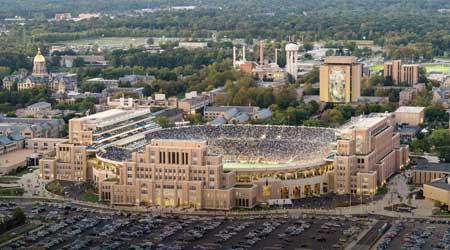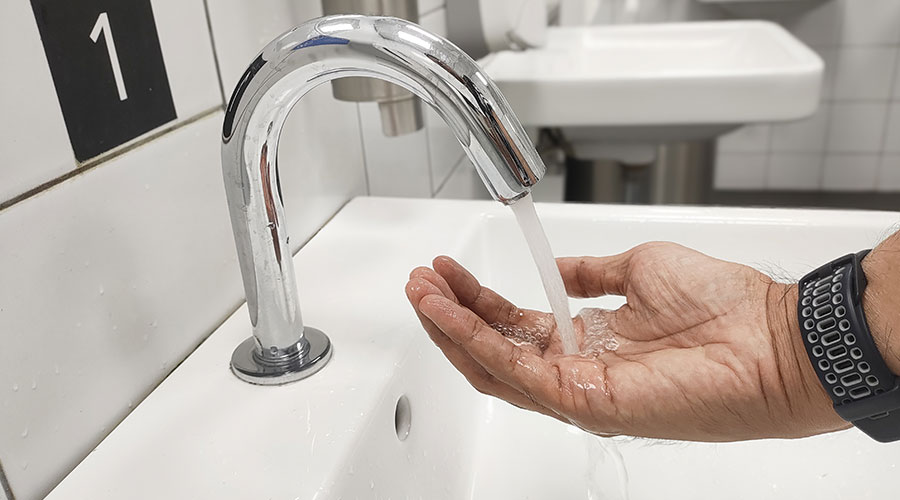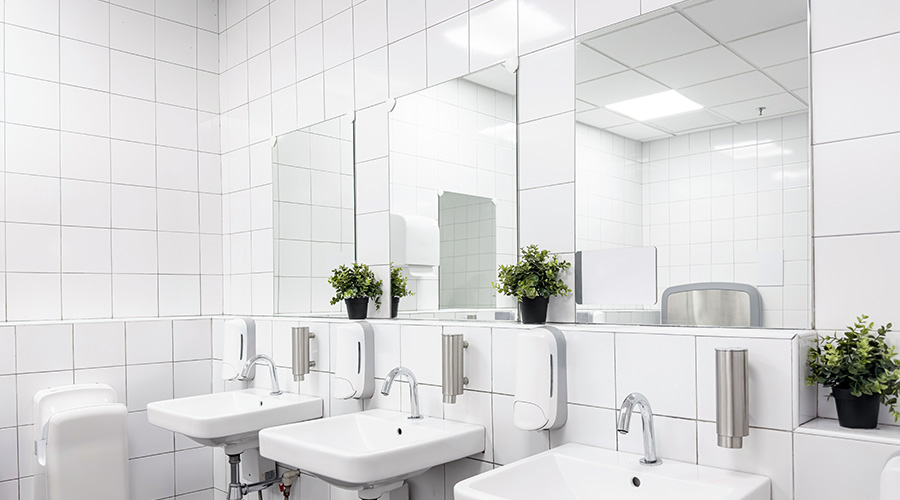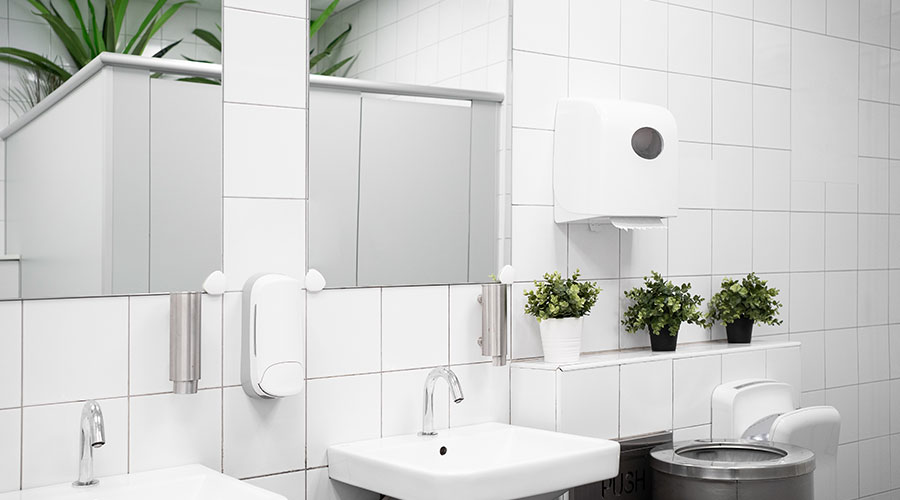 Plumbing and restroom upgrades at Notre Dame Stadium have saved more than $200,000 and enabled the maintenance department to perform needed work elsewhere on campus.
Plumbing and restroom upgrades at Notre Dame Stadium have saved more than $200,000 and enabled the maintenance department to perform needed work elsewhere on campus.Spotlight on Water Conservation and Hygiene
By focusing on water conservation and hygiene renovations at Notre Dame Stadium, the university was able to save more than $200,000.
As part of the Campus Crossroads Project, Hummel and his staff worked on renovating nearly 40 total restrooms at Notre Dame Stadium in order to improve the overall user experience. To achieve this goal, the project focused on water conservation and hygiene.
“The primary driver for the project was to upgrade the appearance within the restrooms,” Hummel says. “That being said, whenever the university takes on a renovation or an upgrade, water conservation is right there at the forefront.
“Modernizing (the restrooms), getting them to be hands-free and reducing the water consumption are all major objectives and major sustainability tenets for the university.”
The modernization began with the removal of functioning trough urinals from the original stadium construction. The renovations included upgrades of lavatories and water closets, as well as faucets, sinks, and urinals.
“Essentially, this was a one-for-one replacement,” Hummel says. “There were some other minor modifications, like chases were built (and) carriers were installed, and we concealed the water lines to make it a more attractive space inside of the restrooms.
“Before (the renovation), the appearance of the restrooms were a little utilitarian and concrete,” Hummel says. “With updated stadium signage, video boards in the concession stands, fresh paint, and other renovations, that blended into the refixturing and repainting of the restrooms, which then added to the entire fan experience. It really did transform the appearance of a stadium that looked utilitarian and a little tired. It really brought the finishes and experience to be a modern-day stadium inside.”
Specifying products
Hummel and his staff specified a range of products designed to help achieve their goals of improved aesthetics, water conservation and hygiene.
Planning for the plumbing renovation portion of the Campus Crossroads Project began several months in advance and involved every member of the team.
“In this case, the project manager on the team is actually our associate vice president for facilities, design and operations,” Hummel says. “We hired a design manager, and we started planning on this six to nine months prior to the start date, and we would hold regular design meetings.”
The maintenance and engineering staffs were heavily involved in product specification throughout the process.
“The engineering staff was highly engaged with the selection of the plumbing fixtures,” Hummel says. “We have a pretty integrated staff. From a design perspective, we have a pretty thorough design review process. Everybody has a seat at the table and a voice, so they played a very active role, and they were very well represented.
“The engineering staff’s concerns were durability, the availability of replacement parts, and just good support from the OEM.”
Coordinating the project with Sloan Valve Co., the team specified a total of 2,105 products — including water closets, urinals, flushometers, faucets, and soap dispensers — that were installed by a contractor.
“There were many discussion on the functionality and style of each fixture,” Hummel says. “With 88,000 fans on gameday, if they are all touching the same fixtures, it can be a breeding ground for germs, and when everything is touchless, that is an ideal environment from a bathroom standpoint.
“Low-flow fixtures are a key factor in that conservation. The sensor activation feature of the faucets and flush valves provide the most hygienic experience, and they modernize the appearance of restrooms. Both were prime objectives of the stadium renovation.”
Related Topics:















